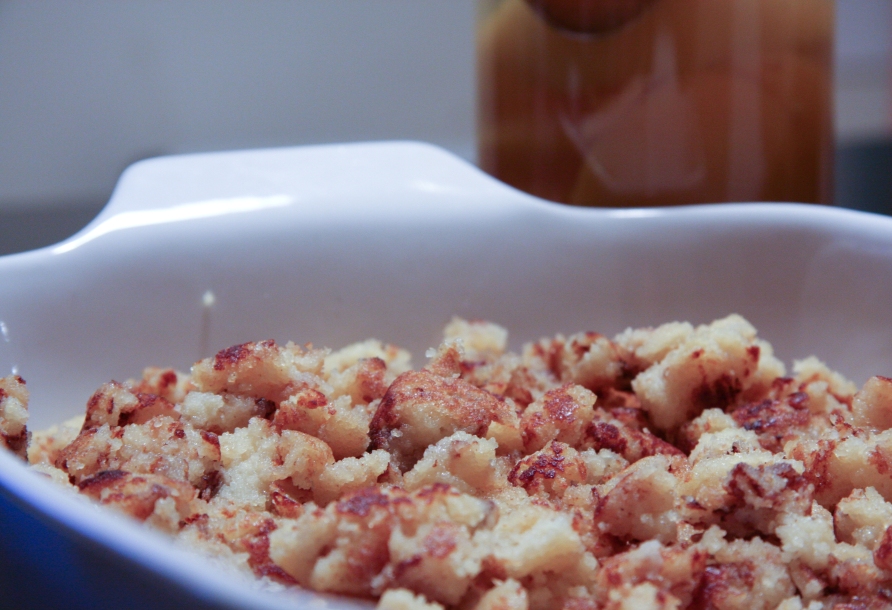We called this blog “The Emperor’s Crumbs” because we will be writing about – and eating – food from one of Europe’s crossroads. The old Austro-Hungarian Empire was home to something like 50 million people and stretched from Poland to the Mediterreanean, so that’s a lot of different palates, climates, and traditions. If you could visit a market from the turn of the last century, you’d find the Czechs offering you their pernik (gingerbread), the Transylvanians cooking kürtös kalacs (coiled cake) over hot coals, the Slovaks tucking into their bryndzové halušky (tiny dumplings with sheep’s cheese) and the Austrians roasting vast pans of sausages. More recently, a good chunk of this part of the world was behind the Iron Curtain, as Winston Churchill (a man who liked his food) put it. While not much of that era can be remembered fondly, I’m sure we’ll come up with a few nostalgic bites from the Socialist past.
The cuisine of Central Europe is not quite as widely known as French or Italian or even Thai cooking, perhaps because it tends towards the heavy and hearty, which isn’t so much in fashion these days. But when it’s well prepared, it’s homey, wonderful food that deserves recognition.
Since we’re in southern Slovakia, obviously we’ll be leaning towards the dishes typical of this part of the region. I hope you’ll send in your own versions of the imperial classics and your own favorites as well.
To lead off, here’s the recipe for császármorzsa in Hungarian, kaiserschmarrn in German. Loosely translated, it means, yep, emperor’s crumbs. It’s usually served with jam or stewed fruit, but it’s equally delicious with maple syrup, and some places in Budapest top it with a custard sauce. It’s a substantial dish, usually served as a main course even though it’s sweet (I have always had some weird thing about having a sweet as a main course, so I aim to serve a salad or something when we have one of these types of dishes, to at least nod towards a savory item).
Valerian says “this meal was a long time favorite of my family. The origin of this dish is in Austria. According to one of the legends the meal was invented by Emperor Franz Josef of Austria-Hungaria. The truth is that this meal was an Austrian peasant meal and only the name refers to the emperor. ”
So here it is, a family favorite.

Emperors Crumbs
When I asked my mum how does she makes this meal, she told me that smardli (as we call it in our family) is basically pancake (crepes) batter prepared like scrambled eggs. There are two ways you can prepare this meal: the labor-intensive way on the stovetop and the lazy way made in the oven.
This is a basic recipe — I think the original was only flour, sugar, eggs, milk and fat — but there are many ways to make variations. You could add vanilla extract, raisins or lemon zest, or experiment even further.
Ingredients
Makes 2 portions
- 3/4 cup/100 g semolina
- 1 cup/250 ml milk
- 1 tsp vanilla extract
- 3 egg yolks
- 3 egg whites
- pinch salt
- 1/2 cups/100 g sugar
- half lemon zest
- 50 g butter for sauteing
- powdered sugar, compote or jam or all three as topping
Method
- Mix together the semolina, flour and milk. Let it sit for an hour or so to let the semolina absorb the milk.
- Mix the egg yolks together with sugar and stir it into the milk mixture.
- Whip the egg whites and a pinch of salt into firm peaks and fold it into the milk/egg mixture..
- Melt the butter and add the batter. Stir the batter with a spatula or wooden spoon until it starts to form little clumps – crumbs. Depending on the size of the pan this can take up to 30 minutes.
- Serve hot with powdered sugar or with jam, or with compote or drizzle with some syrup.


